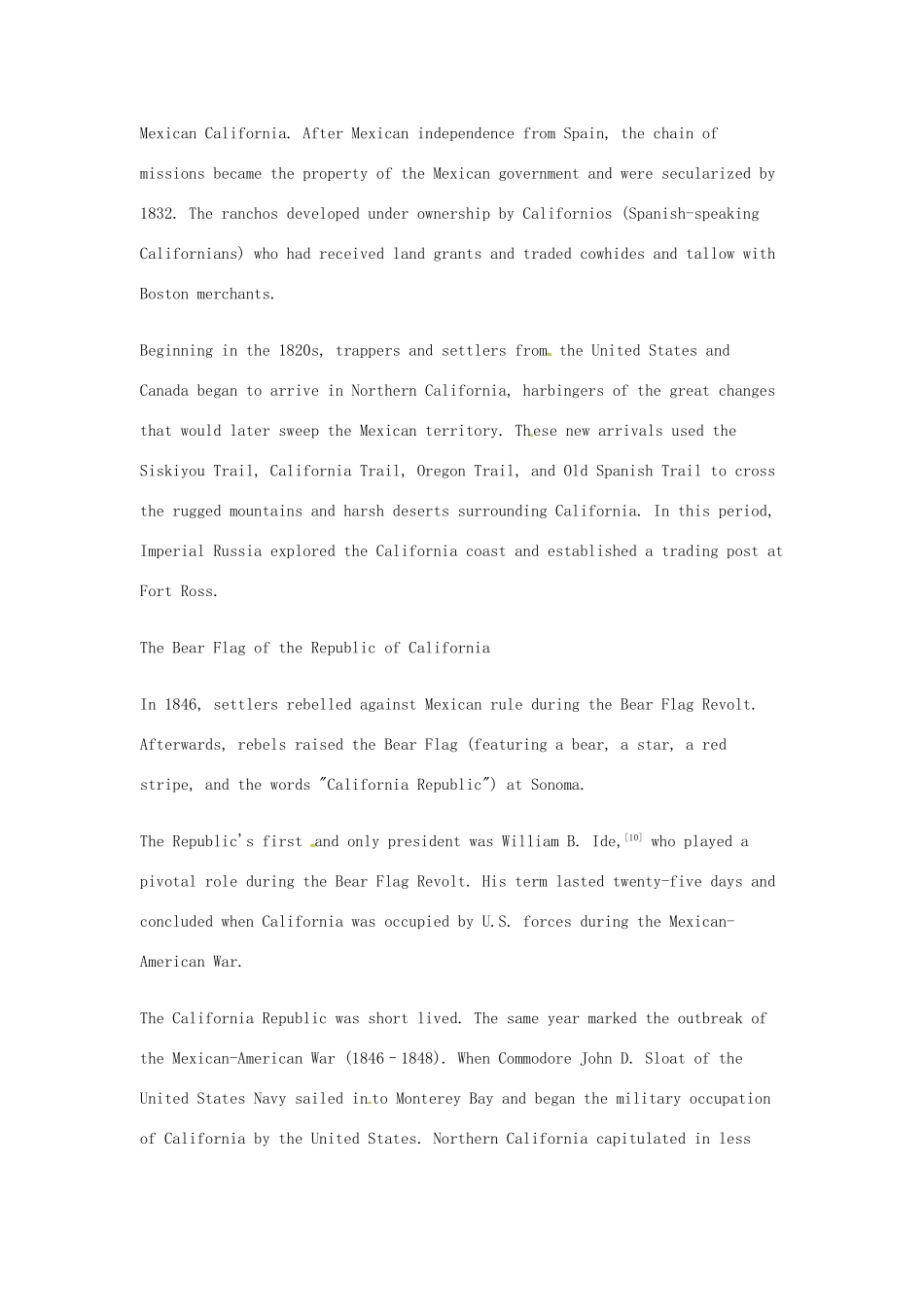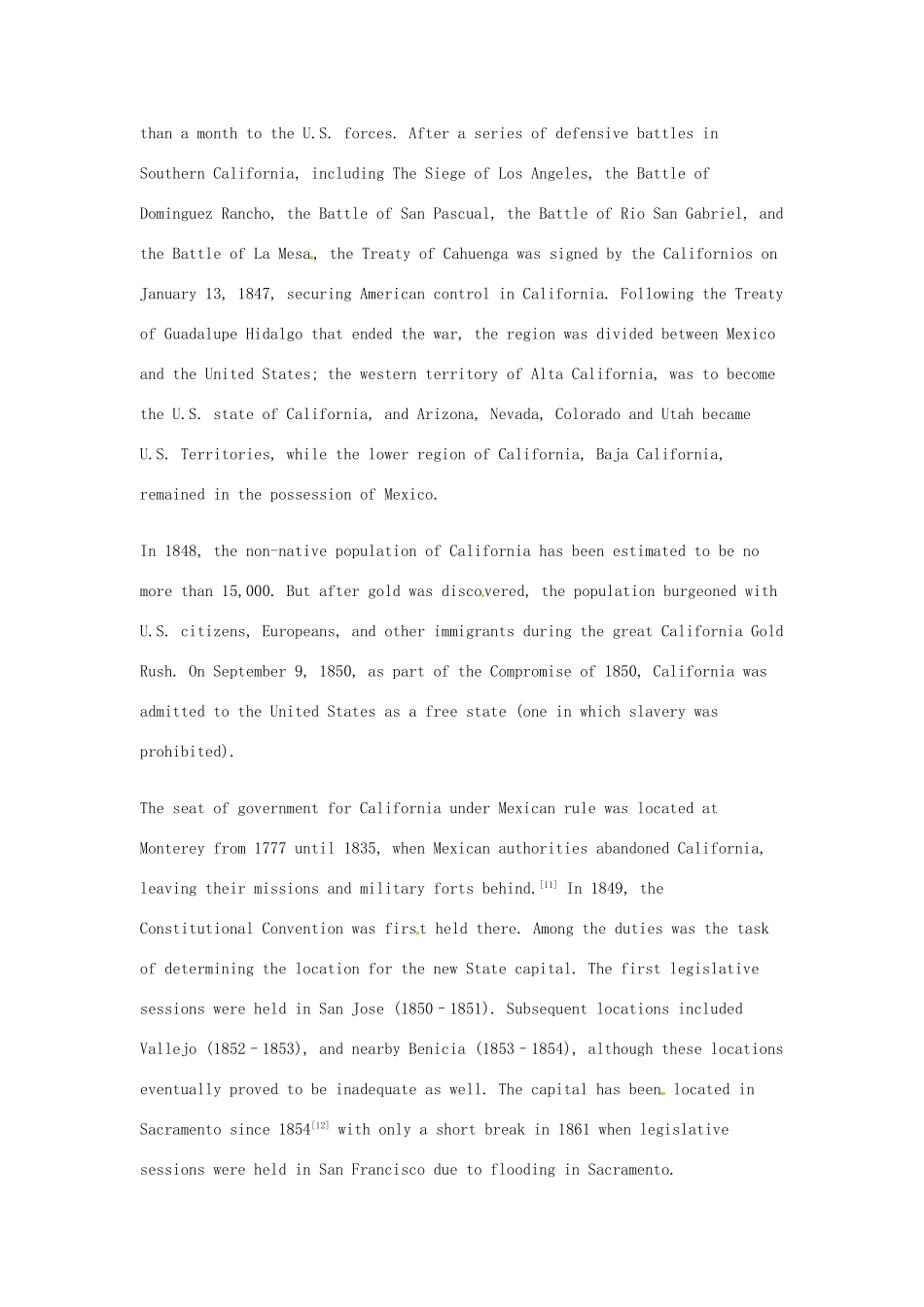California—HistorySettled by successive waves of arrivals during the last 10,000 years, California was one of the most culturally and linguistically diverse areas in pre-Columbian North America; the area was inhabited by more than 70 distinct groups of Native Americans. Large, settled populations lived on the coast and hunted sea mammals, fished for salmon, and gathered shellfish, while groups in the interior hunted terrestrial game and gathered nuts, acorns, and berries. California groups also were diverse in their political organization with bands, tribes, villages, and on the resource-rich coasts, large chiefdoms, such as the Chumash, Pomo and Salinan. Trade, intermarriage, and military alliances fostered many social and economic relationships among the diverse groups.The first European to explore the coast as far north as the Russian River was the Portuguese João Rodrigues Cabrilho, in 1542, sailing for the Spanish Empire. Some 37 years later, the English explorer Francis Drake also explored and claimed an undefined portion of the California coast in 1579. Spanish traders made unintended visits with the Manila Galleons on their return trips from the Philippines beginning in 1565. Sebastián Vizcaíno explored and mapped the coast of California in 1602 for New Spain.Spanish missionaries began setting up twenty-one California Missions along the coast of what became known as Alta California (Upper California), together with small towns and presidios. The first mission in Alta California was established at San Diego in 1769.[9] In 1821, the Mexican War of Independence gave Mexico (including California), independence from Spain; for the next twenty-five years, Alta California remained a remote northern province...


